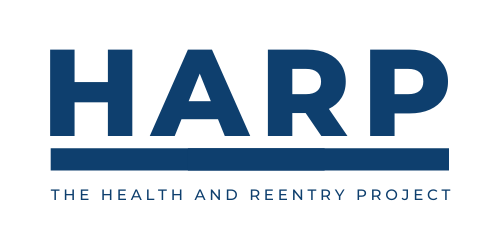ABOUT HARP
Our Goal
HARP’s north star is improving the lives, health, and safety of people and communities. We work towards this vision by building bridges across sectors and stakeholders, advancing policies that promote continuity across carceral and community healthcare settings, and accelerating and scaling innovative approaches to reentry health care.
“Expanding Medicaid’s role at reentry can be a powerful lever to help address national mental health and substance use challenges and improve public safety.”
Our Approach
The HARP team works to achieve transformational change through multiple avenues and activities. HARP starts by learning with and from people and organizations with diverse experiences and perspectives about why and how policy should change. HARP distills these insights in written products, webinars, media, 1:1 engagement, and more to provide a shared vision for policy and practice change. HARP translates this vision for wide-ranging audiences, from on-the-ground health and justice sector professionals to community organizations and local, state, and federal policymakers. HARP act as a resource for information on reentry issues and a linkage for ongoing cross-sector engagement. Throughout all of our work, HARP collaborates with other organizations to strengthen the momentum and impact of policy and practice innovations across the country.
Our Work
HARP’s first phase of work in 2022 raised the visibility of Medicaid reentry policy changes and developed a shared vision for policy reform to improve people’s lives. We convened health care and criminal justice stakeholders and leaders, social justice advocates, policymakers, researchers, service providers, and people with lived experience of incarceration to share their perspectives on policy change and implementation. We synthesized their feedback into a policy brief Redesigning Reentry: How Medicaid Can Improve Health and Safety by Smoothing Transitions from Incarceration to Community, and supported the convening with an explanatory issue brief, Medicaid and Reentry: Policy Changes and Considerations for Improving Public Health and Public Safety. These papers, and other HARP materials, have informed a wide range of stakeholders, including federal and state policy makers, about the impact of potential health and reentry policy changes and how they can and should be carried out.
Redesigning Reentry identified guiding principles for changing Medicaid’s role at reentry, proposed a new care model to support a person’s successful reentry, and proposed seven actions that are essential to successful implementation. We are currently working to advance the principles, care model, and implementation actions that we developed through stakeholder collaboration. To see more of HARP’s work click here.
Redesigning Reentry: A New Care Model to Support Successful Reentry

Guiding Principles for Changing Medicaid’s Role at Reentry:
1. Strengthen continuity of care
2. Help people return to communities “healthy and whole”
3. Advance equity
4. Support evidence-based, clinical services
5. Increase access to communities services
6. Reinvest state and local savings generated by new policies in services
